As a landscape photographer, my first inclination is to march off into the wilderness and find beautiful natural settings to photograph at some uncomfortable time of day. For those of you who live near an urban area, there are actually a great many opportunities for beautiful images from the sunrise, through the day, sunset, and well into the evening.
You can take advantage of the city lights and architecture to add to the landscape experience. And if you happen to have some interesting parks to work from you get natural landscapes combined with urban landscapes to give very interesting combinations.
Choosing the Right Time for Urban Landscapes
Mid to late afternoon gives the photographer longer and softer shadows producing more interesting results. This light also helps to give a nice glow to the buildings. As the sun becomes lower in the sky, buildings can serve to shade different components in your composition allowing you to bring emphasis to different elements within the image.
The two shots below of Boston show how these factors can be brought into play. The first image is a little earlier in the afternoon with the sun still high enough to clear the buildings that are behind the location of the camera. The skyline is illuminated nicely and while the river is a little darker, the sailboats are picking up some of the sun causing them to stand out from the darker river. The second image now shows what happens a little later as the skyline and river become shaded. The light goes more golden and reflections of the clouds and color change in the sky are showing up in the skyscrapers. The river and sailboats are now fully in shadow but still provide an interesting foreground element.
Now as any good landscape photographer knows, the hour around sunset or sunrise provides some of the most beautiful light and brings truly unique qualities to your pictures. But you can also use features with the urban environment to help give unique renderings of that time of day.
Considering the Composition of Your Landscapes
The first image below uses the subway and bridge to provide a leading line for the viewer to carry them back into the city. The clouds and fading light help create a mood, but don't fail to use other items that you may not normally consider. I decided to also emphasize the graffiti on the bridge to add a graphic element to the shot and some different colors. You can also turn around the classic landscape shot by adding urban elements. The second image is taken from the Boston Public Gardens just after sunset. You have all the classic components of a landscape with the trees and water and the dramatic blue light in the sky with cloud structure. But in contrast to those elements are the old and new skyscrapers along with the yellow and orange colors from the street lights. For me these provide a different element to help draw your eye into the scene and the ordered structure of the building contrast with the somewhat random nature of the trees and clouds.
Low Light Urban Photography
Finally, there are the images well after sunset. I particularly like this time of night because you can emphasize the architecture and the city lights. In addition, you still can bring out sky and cloud structure because the glow from the city will serve to illuminate the sky. Artificial light provides illumination for the photographers foreground objects and provides interesting details The sky is dark, but reflects the orange light from the city and gives a little mystery to the shot. Finally, a classic cityscape can be rendered with a great amount of detail but also because of the long exposure show the movement in the clouds.
Don't hesitate to explore landscape opportunities throughout nearby cities. They can give a photographer interesting studies and elements not normally present in classic landscapes. The challenge is to try to combine the classic landscape components with the urban effects to try and make unique images.
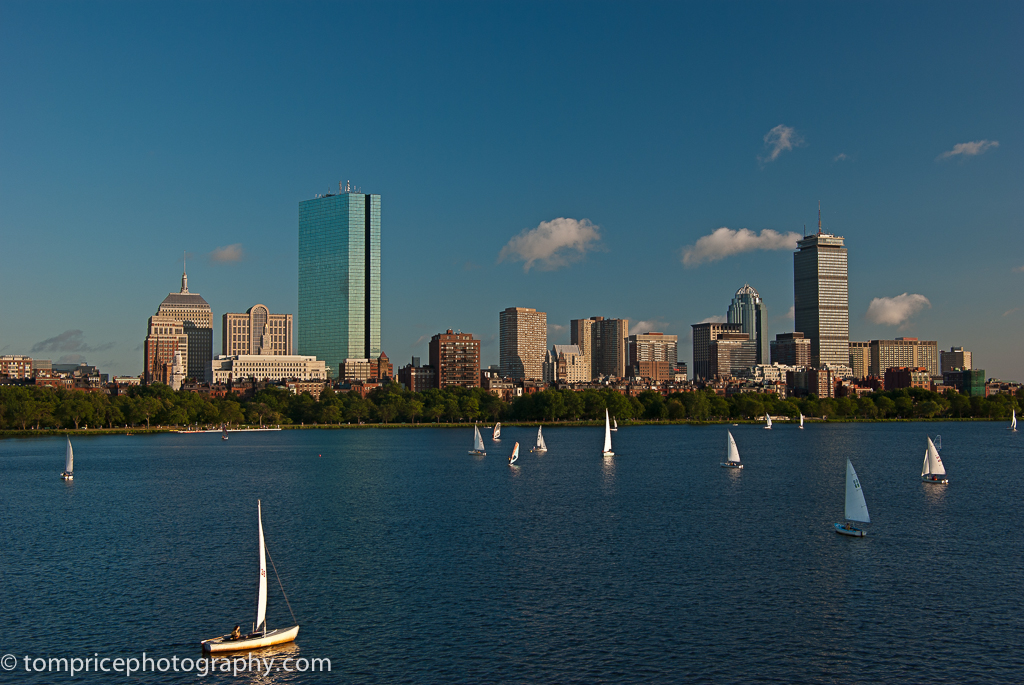
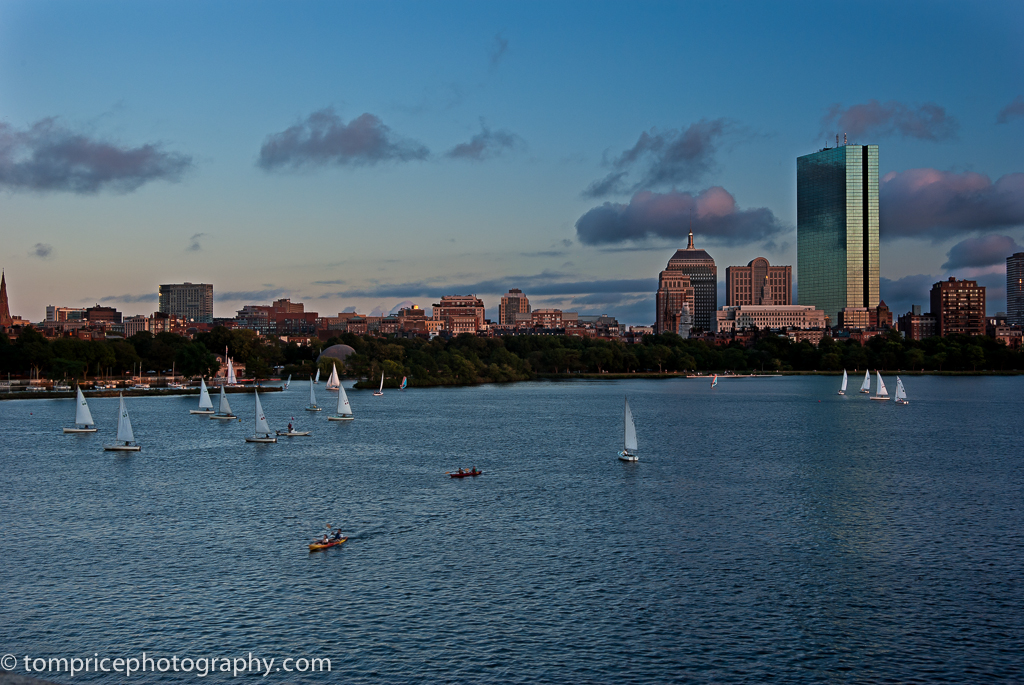
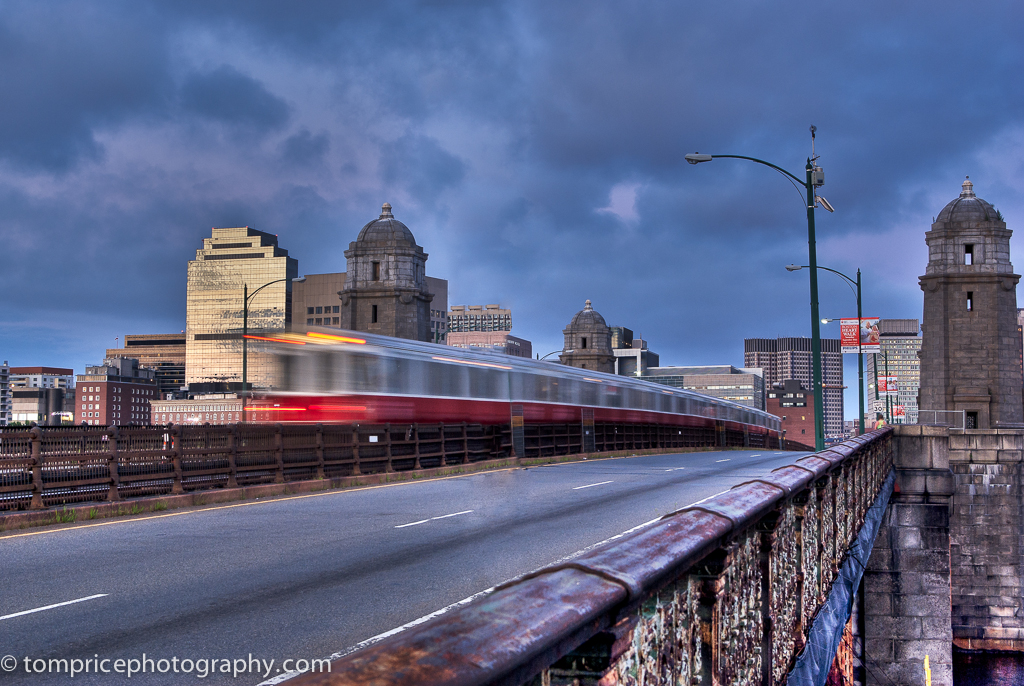
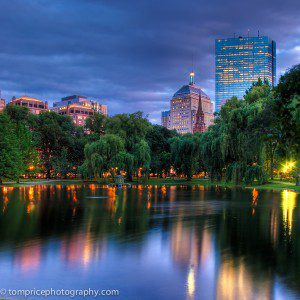
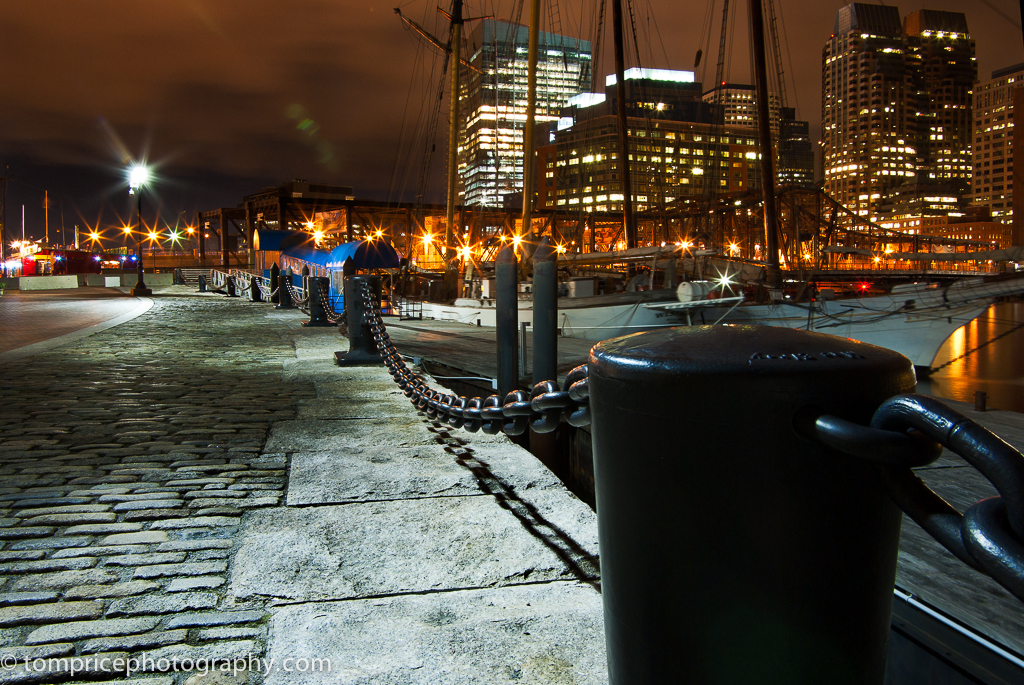
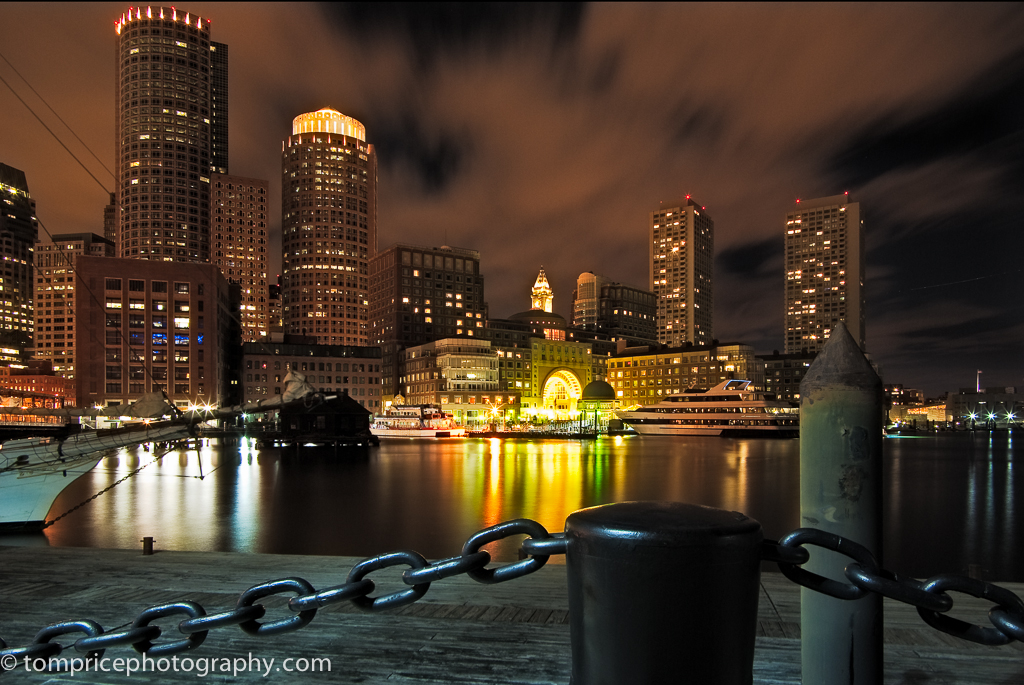

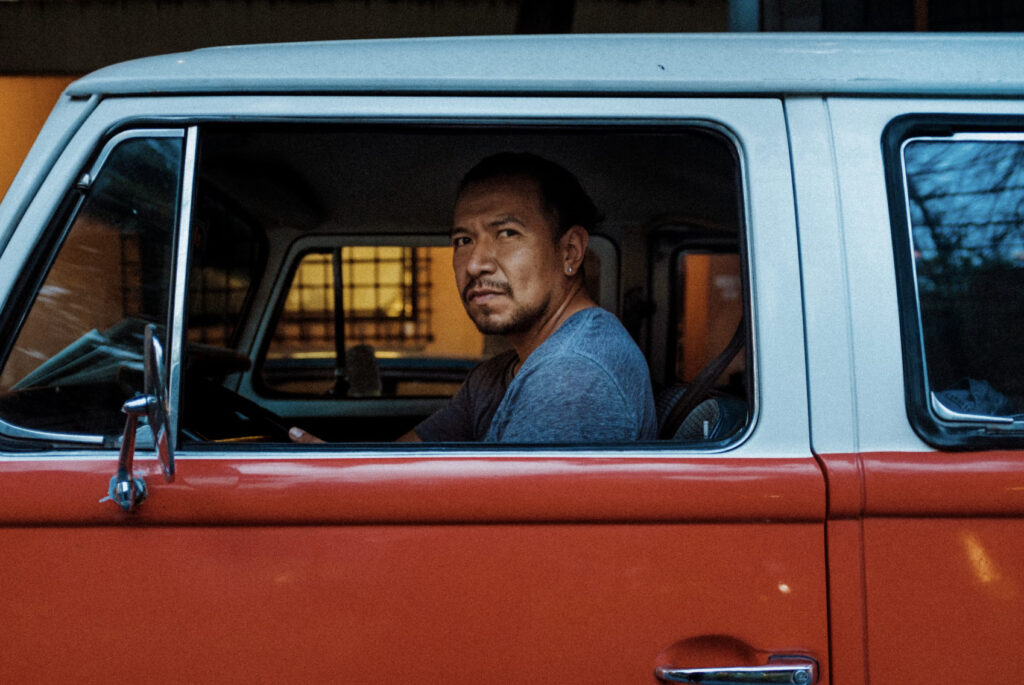
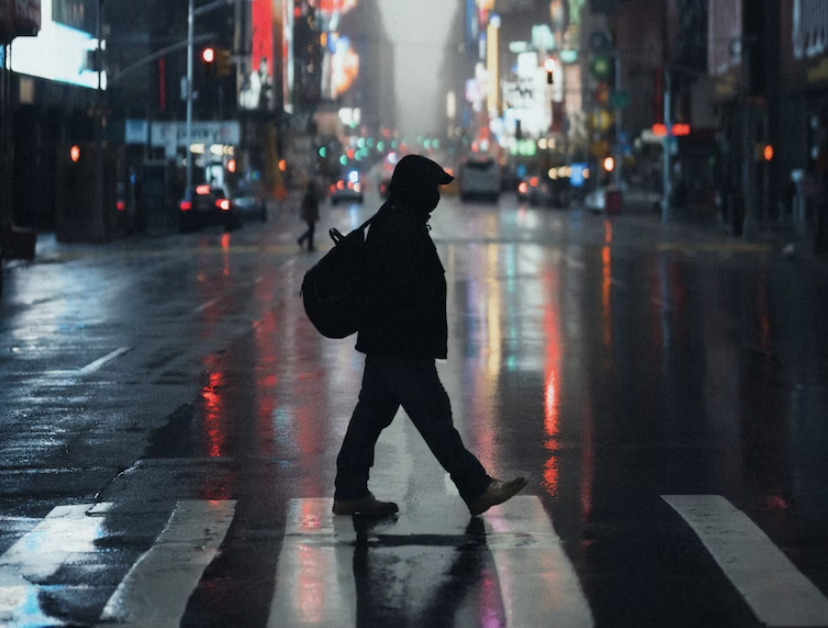
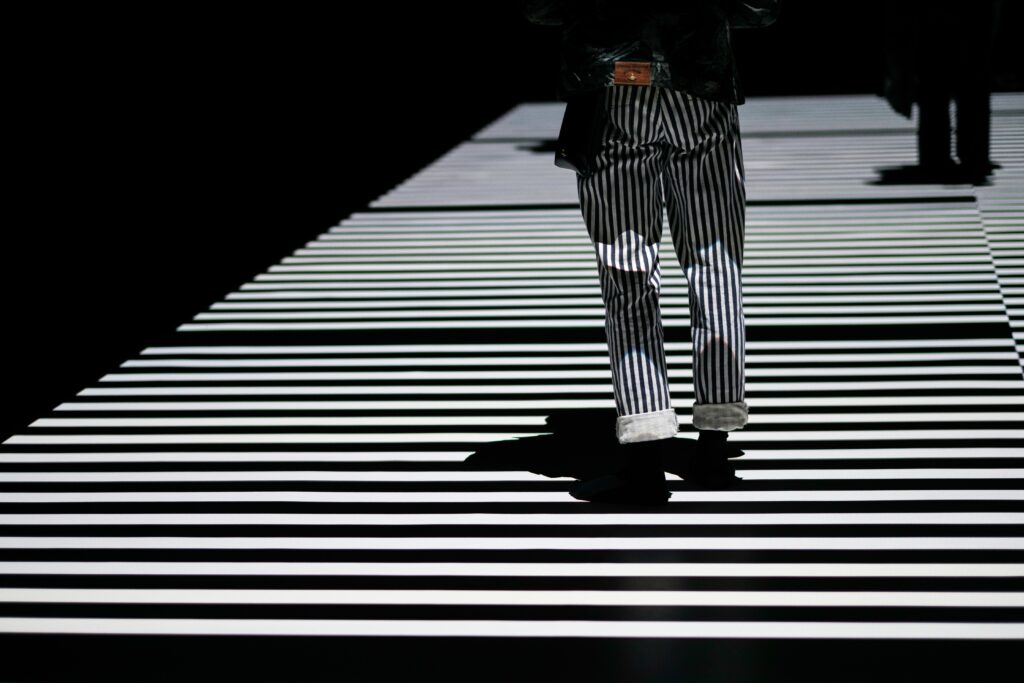
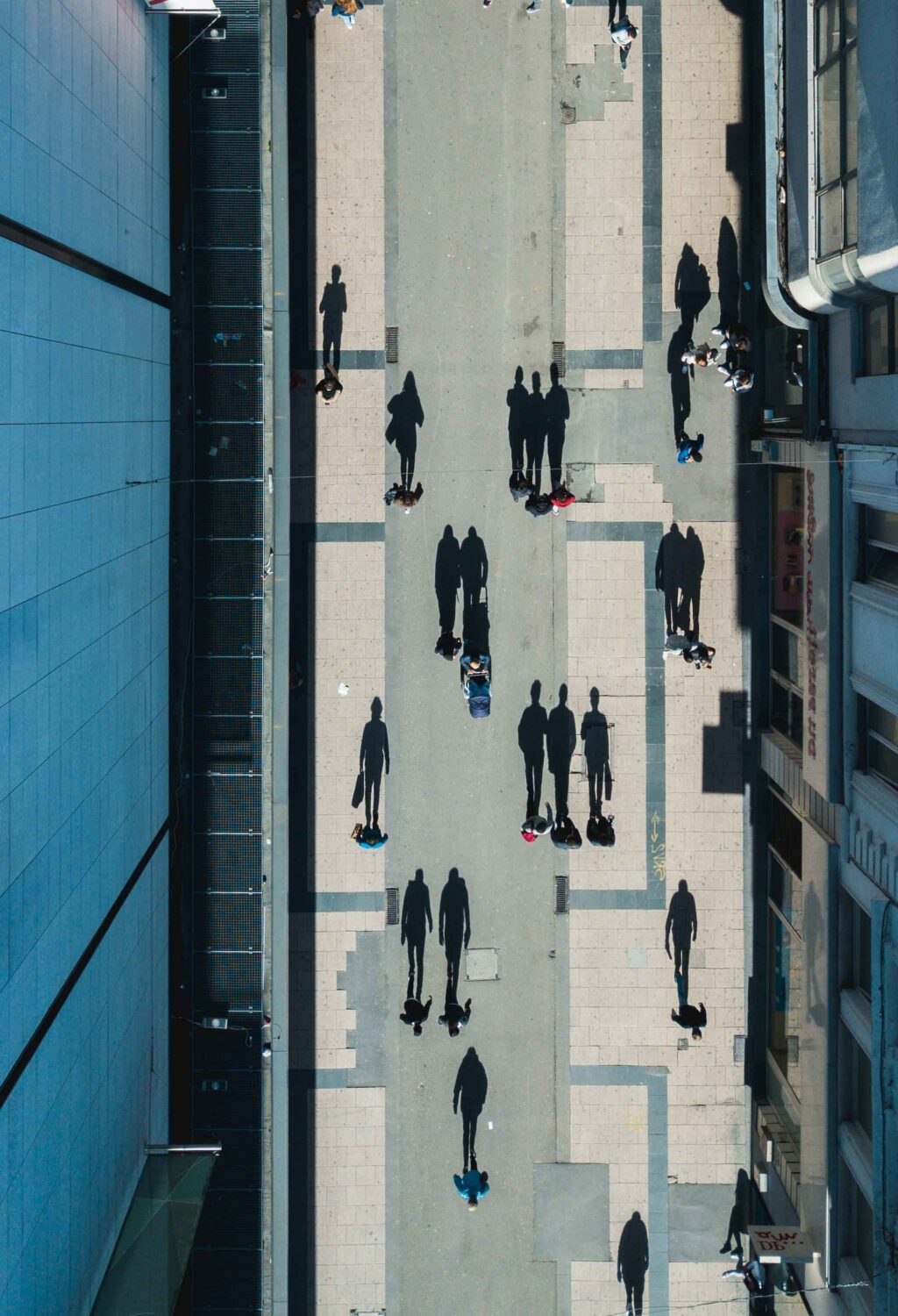
4 Comments
Thanks for your tips, Tom. Living on Cape Ann, It is great to see scenes that I am familiar with. I will certainly checkout that graffiti on the “salt-and-pepper-shaker” bridge (Longfellow Bridge) next time I get to Boston with my camera.
For anyone visiting Boston, the commuter rail on the Rockport Line from North Station will get you within easy walks of some beautiful beaches (Beverly Farms,- West Beach, Manchester, Singing Beach, and the Rockport waterfront), so venture beyond Salem!
PS Tom’s photos were taken near the MIT boat house on the Cambridge side of the Charles River and then from the south side of the Four Point Channel close to several popular hotels, the Tea Party Ship Museum, and pedestrian friendly areas where it is easy to photograph the city at night. The area is also within easy walking distance from South Station.
One compositional element that I noticed in Tom’s photo of the city is the large fence post in the foreground. With a wide angle lens, that post could easily be only 3′ or so away and still be clearly in focus. This technique gives a nice sense of depth perception to long distant scenes (landscapes).
See Outdoor Photoography Magazine, Dec. ’11 “Wide Angle Close-Ups” cover article by Rob Sheppard.
Fantastic ideas! Thanks!!
It would be very helpful to me to know how the photos were shot. The shutter speed, ISO and aperture setting for the featured photos.